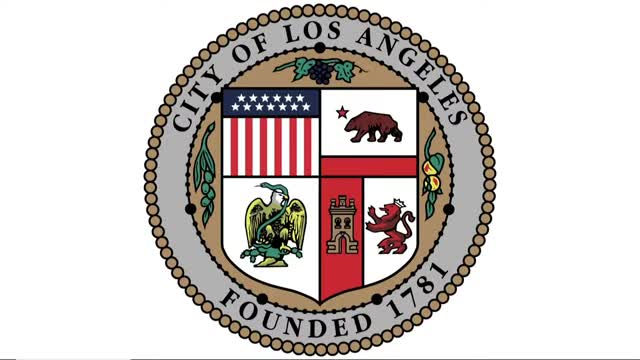Fire Department Inspections Raise Concerns Over Compliance at 1970s Butane Facility
December 03, 2024 | Trade, Travel and Tourism Committee, City Council Committees, Los Angeles City, Los Angeles County, California
This article was created by AI summarizing key points discussed. AI makes mistakes, so for full details and context, please refer to the video of the full meeting. Please report any errors so we can fix them. Report an error »

In a recent meeting of the Trade, Travel, and Tourism Committee held on December 3, 2024, in Los Angeles, significant discussions centered around safety inspections and compliance at a local facility handling hazardous materials. The meeting highlighted concerns regarding the adequacy of current inspection protocols and the implications for public safety.
Inspector Hamilton provided an overview of the inspection processes conducted by the fire department, which are divided into two main categories: fire code inspections and environmental safety inspections. The fire department's harbor industrial unit focuses on compliance with fire safety regulations, ensuring that systems like sprinklers and alarms are operational. In contrast, the environmental side, represented by Hamilton's team, conducts California Accidental Release and Prevention (CalARP) inspections, which are more comprehensive and occur every three years for high-risk facilities.
During the meeting, committee members expressed skepticism about the effectiveness of these inspections, particularly concerning a facility built in 1973 that stores large quantities of butane. Questions arose about whether the facility could truly comply with modern fire codes given its age and the potential risks associated with its operations. Inspector Hamilton maintained that the facility meets current standards, citing regular inspections and maintenance as key factors in its ongoing compliance.
However, committee members raised concerns about the potential for catastrophic incidents, emphasizing that even minor violations could accumulate to create significant risks. The discussion underscored the need for clarity on what constitutes a serious violation and the thresholds for shutting down operations. Inspector Hamilton acknowledged that while the facility has not faced shutdowns in its operational history, the inspection process is rigorous, and any serious violations would prompt immediate corrective actions.
The meeting concluded with a call for legislative support to enhance safety measures and potentially approve the hiring of additional process safety engineers, which would bolster the inspection capabilities for hazardous materials. The committee's discussions reflect a growing awareness of the complexities and risks associated with aging facilities handling dangerous substances, highlighting the need for ongoing scrutiny and potential reforms in safety regulations.
As Los Angeles continues to navigate the challenges of industrial safety, the outcomes of these discussions may lead to significant changes in how hazardous facilities are monitored and regulated, ultimately aiming to protect the community from potential hazards.
Inspector Hamilton provided an overview of the inspection processes conducted by the fire department, which are divided into two main categories: fire code inspections and environmental safety inspections. The fire department's harbor industrial unit focuses on compliance with fire safety regulations, ensuring that systems like sprinklers and alarms are operational. In contrast, the environmental side, represented by Hamilton's team, conducts California Accidental Release and Prevention (CalARP) inspections, which are more comprehensive and occur every three years for high-risk facilities.
During the meeting, committee members expressed skepticism about the effectiveness of these inspections, particularly concerning a facility built in 1973 that stores large quantities of butane. Questions arose about whether the facility could truly comply with modern fire codes given its age and the potential risks associated with its operations. Inspector Hamilton maintained that the facility meets current standards, citing regular inspections and maintenance as key factors in its ongoing compliance.
However, committee members raised concerns about the potential for catastrophic incidents, emphasizing that even minor violations could accumulate to create significant risks. The discussion underscored the need for clarity on what constitutes a serious violation and the thresholds for shutting down operations. Inspector Hamilton acknowledged that while the facility has not faced shutdowns in its operational history, the inspection process is rigorous, and any serious violations would prompt immediate corrective actions.
The meeting concluded with a call for legislative support to enhance safety measures and potentially approve the hiring of additional process safety engineers, which would bolster the inspection capabilities for hazardous materials. The committee's discussions reflect a growing awareness of the complexities and risks associated with aging facilities handling dangerous substances, highlighting the need for ongoing scrutiny and potential reforms in safety regulations.
As Los Angeles continues to navigate the challenges of industrial safety, the outcomes of these discussions may lead to significant changes in how hazardous facilities are monitored and regulated, ultimately aiming to protect the community from potential hazards.
View full meeting
This article is based on a recent meeting—watch the full video and explore the complete transcript for deeper insights into the discussion.
View full meeting
